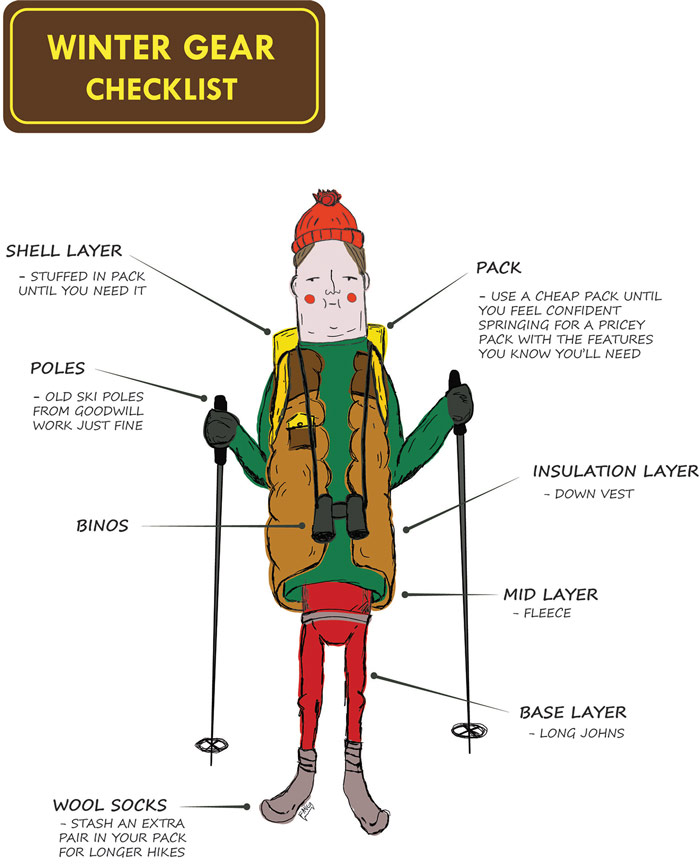Essential Winter Hiking Gear
A cold weather checklist
One way to build a lasting and positive relationship with our gem of a region is to access the abundance of wild places that rejuvenate and recharge the spirit. One simply must commit to get out and discover these special places.
Winter is here, but that definitely doesn't deal a deadly blow to the hiking season. Late fall and now winter deliver some of the best hiking conditions of the year: no mosquitos, low humidity, peak foliage – perfect. Consider a few gear tips and you'll be all set for fall and winter hiking at its best.

Wool socks: You might think, "Oh, socks are socks." No, they aren't. Feet sweat. Cotton soaks up sweat and holds onto it like a kitchen sponge. But wool wicks away the sweat and lets your feet breathe. If your feet are cold and wet, it's hard to have a good time. Happy feet = happy hiker. Repeat it … know it … live by it. Check out Smartwool, Patagonia, or Filson for the best wool socks.
Layers: As Survival Man Les Stroud says when it comes to winter hiking, "You sweat, you die." Adding and removing layers as needed gives you the power to prevent overheating. When you're overheated, you sweat, and when you sweat your gear get soaked and freezes. Not good for business.
Light pack: You don't want your arms bogged down carrying gear while you walk. Stuff the layers you shed into a light daypack or rucksack.
Poles: Not 100 percent essential – some folks like them, some folks hate them. I'm a believer, at least for winter hiking. You can probe the trail ahead for hidden snags and supplement your traction on slippery leaves or in deep snow.
Binoculars/scope: With fewer leaves in the trees and brush, visibility is high. But sound travels farther in cold air, so shhhh … use your binos to scope that majestic bald eagle from a distance. If wildlife observation is your objective, be quiet, walk slowly, and open your ears. – Matt Fang

.png)
